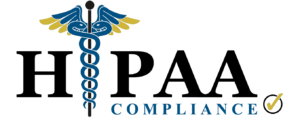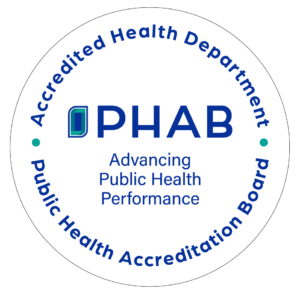Location and Phone
120 S. Hays Street
Bel Air, MD 21014
410-877-1028
KI Brochure
- Do you live in northern Harford County and within 10 miles of the Peach Bottom Power Plant?
- Do You Need Potassium Iodide (KI)?
- Individuals needing KI can call the Emergency Preparedness Division of the Health Department at 410-877-1028 and arrange to pick it up at 120 S. Hays Street. Individuals can pick up for their household as well as the household of other family members, friends, or neighbors who live within 10 miles of the power plant.
CDC Nuclear Powerplant Infographic
Peach Bottom Power Plant
Peach Bottom Atomic Power Station, is a two-unit nuclear generation facility located on the west bank of the Conowingo Pond (Susquehanna River) in Delta, Pennsylvania.
Peach Bottom employs a sophisticated emergency response plan to protect public health and safety. Both the Nuclear Regulatory Commission (NRC) and the commonwealth of Pennsylvania approved the plan. The Emergency Planning includes coordination with local and state municipalities.
PEACHBEX stands for Peach Bottom Atomic Nuclear Exercise. In the event of a radiological release from Peach Bottom Atomic Power Station. If an event occurred at the facility located in Delta, Pennsylvania, a portion of Harford County may be affected. As a result, the County, through its Emergency Operations Center, is required by the Federal Emergency Management Administration (FEMA) and the Maryland Emergency Management Administration (MEMA) to provide an action plan which incorporates the Harford County Health Department;s Bureau of Environmental Health and Emergency Preparedness Division as a provider and operator of a monitoring and decontamination center.
At least two sites in the County, Harford Community College and Fallston High School, have been designated for this purpose. In an actual event, persons suspected of contamination would "walk through" the monitor and would be monitored by Health Department personnel.
Potassium iodide (KI) is a salt of stable iodine which is an important chemical needed by the body to make thyroid hormones. Most of the stable iodine in our bodies comes from the food we eat. Iodized table salt also contains iodine, however, table salt does not contain enough iodine to block radioactive iodine from getting into your thyroid gland. You should not use table salt as a substitute for KI. KI is a stable iodine in medicine form. The thyroid gland cannot tell the difference between stable and radioactive iodine and will absorb both. When you take KI in medicine form, it gets absorbed by the thyroid and the gland becomes full and cannot absorb any more iodine,either stable or radioactive, for the next 24 hours.
Children are the group with the highest risk. A significant increase in the incidence of thyroid cancer among children in Belarus, Ukraine and Russia was observed as a result of exposure to radioiodine from the Chernobyl accident. The younger the children, the higher the observed risk. No similar increase was reported for adults.
To be most effective, KI should be taken before or shortly after exposure to radioiodine. Even if taken three to four hours after exposure, it still would reduce the uptake of radioiodine by the thyroid. However, its effectiveness would be reduced.
The use of KI is only indicated in emergencies where the public is likely to be exposed to radioiodine. State and County health departments monitor all radiation emergencies and will issue advisories informing the public whether KI should be taken. In those cases where KI is indicated, the health departments will also issue advisories on when the administration of KI is no longer needed.
KI is quite effective in reducing the radiation dose to the thyroid that could result from the intake of radioiodine. It does not protect other organs or tissues. KI does not protect against radioactive materials, other than iodine, which are inhaled or ingested.
The existing emergency response plans in Maryland and Harford County rely on evacuation and sheltering-in-place of potentially affected populations to prevent their exposure to the radioactive materials that could be released in a radiological event. Evacuation would continue to be the primary protective measure, along with sheltering-in-place of individuals who cannot relocate. Ingestion of contaminated milk or other food products can also lead to significant intake of radioiodine. The primary protective measure for the ingestion pathway is the control of the food supply to prevent ingestion of contaminated products.
Side effects are unlikely because of the low dose and short time taking the drug. Possible side effects include: skin rashes, metallic taste in mouth, sore teeth or gums, upset stomach, symptoms of a head cold, diarrhea.
KI SHOULD NOT BE USED BY PEOPLE ALLERGIC TO IODINE.
IN CASE OF AN OVERDOSE OR ALLERGIC REACTION, CONSULT A PHYSICIAN OR THE HEALTH DEPTARTMENT AT: 410-638- 8410 or 410-638-1500
Because of possible side effects, individuals with known iodide sensitivity or who have conditions associated with increased risk of iodine hypersensitivity, should avoid taking KI.
Individuals should consult their physicians to determine if they have iodine sensitivity or conditions that may increase their risk of developing iodine hypersensitivity.
Such information should be obtained prior to an emergency since, to be effective, KI needs to be taken within a narrow time window from exposure.
Because some newborns may develop transient hypothyroidism, newborns given KI should be monitored for hypothyroidism symptoms, and treated if such symptoms are observed. FDA recommends that neonates (newborn to one month), pregnant and lactating women, and those with known iodine sensitivity, should be given priority with regard to other protective measures.
In December 2001, FDA issued a revised guidance document, which recommends the following lowest effective dosages for the different age groups:
KI is currently FDA-approved and available over-the-counter in 65-mg and 130-mg tablets and liquid form. The 65-mg tablets are larger than the 130-mg tablets and scored in quarters. Dosing at the FDA recommended level is much easier with the 65-mg tablets. The pills can either be cut on the score lines or crushed to make lower doses, which will help parents and caregivers measure the right dose for younger children or babies, who cannot take pills. For example, if a 130-mg pill were dissolved in 8 ounces of juice or other liquid, one ounce would contain 16 mg of KI.
Efforts should be made to dose at the FDA-recommended level, especially for neonates. Since it is hard to cut many pills, the State Health Officer says that, in an emergency, it is safe for children at school or day care centers to take the whole pill. Children 12 years and under should take one 65-mg tablet. Children over 12 years or over 150 pounds should take one 130-mg tablet or two 65-mg tablets. If the appropriate dosage is not available, the Health Deptartment supports the administration of the 130-mg tablet for children in the event of emergencies. This dose is safe and well within the recommended therapeutic range of KI for other indications. The blocking effect of iodide on the thyroid lasts only a few days and any suppressive effect of KI on thyroid function has been shown to be minimal, even in young children. FDA's position is that the overall benefits of KI far exceed the risks of KI overdosing, especially in children.
| Age Group | KI Dosage | # of 65-mgtablets | # of 130-mgtablets |
| Adults over 18 years | 130 mg | 2 | 1 |
| Over 12 -18 years and over 150 pounds | 130 mg | 2 | 1 |
| Over 12 -18 years and less than 150 pounds | 65 mg | 1 | 1/2 |
| Over 3 -12 years | 65 mg | 1 | 1/2 |
| Over 1 month to 3 years | 32 mg | 1/2 | 1/4 |
| Birth to 1 month | 16 mg | 1/4 | 1/4 |
Administered KI is effective for about 24 hours. The state or local health department will issue instructions regarding how long to continue taking KI. Once individuals are removed from the areas affected by the release, there is no need to continue taking KI.
The shelf life approved by FDA for different manufacturers of the drug ranges from three to five years. However, if properly stored (protected from air, heat, light and moisture), KI can maintain its form for many years without significant degradation.
No. FDA approved the distribution of KI for prophylactic use as an over-the-counter drug.
KI is available without a prescription. You should talk to your pharmacist to get KI and for specific directions about how to take it correctly. Your pharmacist can sell you brands that have received approval from the federal Food and Drug Administration. Individuals also can purchase it over the Internet. Alternatively, residents can obtain KI at the Harford County Health Department located at 120 South Hays Street in Bel Air if they live within 10 miles of the Peach Bottom Power Plant.
Other Sources of Information About a Radiological Event
Harford County Emergency Management
Peach Bottom Atomic Power Station


